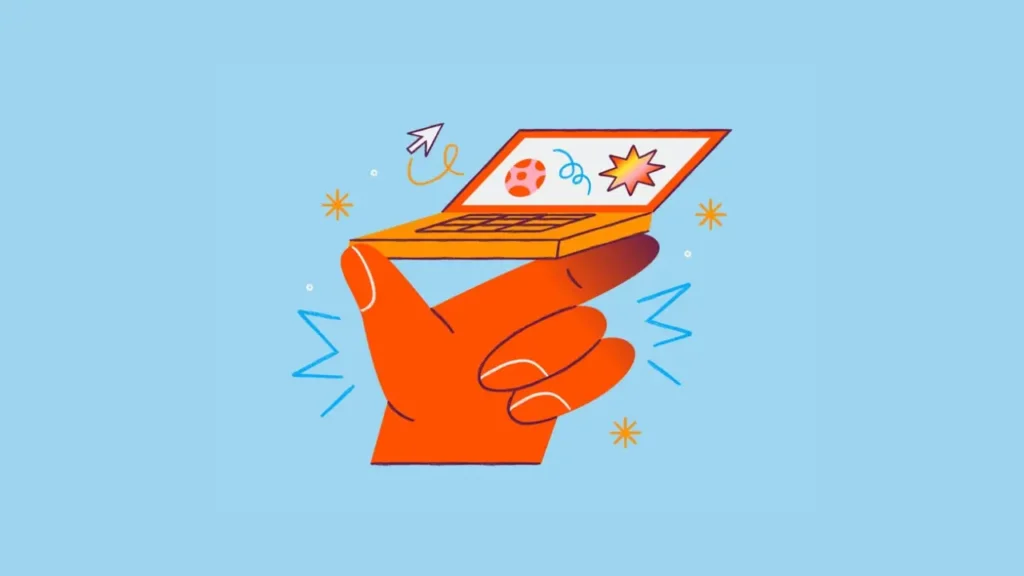Freelancing is becoming an increasingly popular career choice, offering professionals the flexibility to work on their terms. Whether you’re a writer, designer, programmer, or consultant, freelancing allows you to work independently, set your rates, and choose your clients. In this blog, we will explore what freelancing is, its benefits, challenges, how to start freelancing, and the best platforms to find work.
1. Understanding Freelancing
Definition of Freelancing
Freelancing is a form of self-employment where individuals provide services to clients on a project-by-project basis, rather than working as a full-time employee for a company. Freelancers are independent contractors who manage their workload, clients, and payments.
Freelancing vs. Traditional Employment
Unlike traditional jobs, freelancers do not receive a fixed salary. Instead, they are paid per project, hourly, or on a retainer basis. They are responsible for handling taxes, insurance, and other administrative tasks typically managed by an employer.
Common Freelance Professions
Freelancing is widespread across multiple industries. Some common fields include:
- Writing & Content Creation – Copywriting, blogging, technical writing
- Graphic Design & Multimedia – Logo design, branding, illustration
- Web Development & Programming – Frontend/backend development, app development
- Marketing & SEO – Digital marketing, social media management, SEO optimization
- Consulting & Coaching – Business consulting, career coaching
- Photography & Videography – Event photography, video editing
2. Why People Choose Freelancing
Benefits of Freelancing
- Flexibility in Work Hours – Freelancers can choose when and where they work.
- Independence – No need to report to a boss or adhere to company policies.
- Higher Income Potential – Skilled freelancers can earn more than traditional employees.

- Varied Work – Opportunity to work on diverse projects and industries.
- Better Work-Life Balance – Ability to manage personal and professional life effectively.
Drawbacks of Freelancing
- Irregular Income – Inconsistent cash flow due to project-based work.
- No Employee Benefits – No health insurance, paid leave, or retirement benefits.
- Client Management Challenges – Handling difficult clients and payment disputes.
- Self-Discipline Required – Need for strong time management skills.
3. How to Start Freelancing
Step 1: Identify Your Skills
Assess your strengths and choose a field that aligns with your expertise. If necessary, acquire new skills through online courses or certifications.
Step 2: Build a Portfolio
A strong portfolio showcases your work and attracts potential clients. It can include case studies, previous work samples, and testimonials.
Step 3: Choose a Freelance Platform
Freelancers can find work on several online platforms, such as:
- Upwork – A popular freelancing marketplace.
- Fiverr – Offers gigs for various skills.
- Freelancer – Connects freelancers with clients worldwide.
- Toptal – Focuses on high-quality talent in tech and finance.
Step 4: Set Your Pricing
Determine your rates based on industry standards, experience, and project complexity. Research competitor rates to set competitive pricing.
Step 5: Start Marketing Yourself
Promote your services using:
- Social media (LinkedIn, Twitter, Instagram)
- Personal website or blog
- Networking and referrals
Step 6: Apply for Freelance Jobs
Create a compelling proposal for each job application. Highlight your skills, experience, and how you can add value to the client’s project.
4. How to Succeed as a Freelancer
Time Management Strategies
- Use time-tracking tools like Toggl or Clockify.

- Set daily work schedules and deadlines.
- Prioritize tasks using productivity methods like the Pomodoro Technique.
Managing Clients and Payments
- Use contracts to outline payment terms, project scope, and deadlines.
- Use payment platforms like PayPal, Wise, or Stripe for secure transactions.
- Keep communication professional and clear to avoid misunderstandings.
Scaling Your Freelance Business
Once you establish yourself, consider expanding by:
- Increasing your rates.
- Outsourcing tasks to subcontractors.
- Specializing in a high-paying niche.
5. Freelancing Trends & Future Outlook
Rise of the Gig Economy
More professionals are shifting to freelance work due to remote work opportunities and digital transformation. Companies are also hiring freelancers to cut costs and access a global talent pool.
AI and Automation in Freelancing
AI tools like ChatGPT, Canva, and Jasper AI are helping freelancers streamline their work. However, freelancers must focus on skills that AI cannot easily replace, such as critical thinking and creativity.
The Future of Freelancing
The freelance economy is expected to grow, with more businesses relying on independent professionals for project-based work. Freelancers who stay updated with industry trends will have a competitive advantage.
Frequently Asked Questions
1. What is freelancing?
Freelancing is a form of self-employment where individuals offer their services to clients on a contract or project basis rather than being employed full-time by a company.
2. Who can become a freelancer?
Anyone with marketable skills can become a freelancer. Common freelance professions include writing, graphic design, programming, marketing, consulting, and photography.
3. How do freelancers get paid?
Freelancers are usually paid per project, hourly, or on a retainer basis. Payments are processed through bank transfers, PayPal, Wise, Stripe, or freelance platforms like Upwork and Fiverr.

4. Do freelancers have a fixed salary?
No, freelancers earn based on the number of projects they complete. Their income can fluctuate depending on the workload and client payments.
5. What are the best freelancing platforms?
Some of the best platforms for freelancers include:
- Upwork (for a wide range of professional services)
- Fiverr (for small gigs and services)
- Freelancer (for bidding on projects)
- Toptal (for high-end talent in tech and finance)
6. Is freelancing legal?
Yes, freelancing is legal. However, freelancers must comply with local tax laws and may need to register their business, depending on their country’s regulations.
7. How can I start freelancing with no experience?
- Choose a skill and develop it through online courses.
- Create a portfolio with sample projects.
- Sign up on freelancing platforms and apply for beginner-friendly projects.
- Network and offer services at a competitive rate initially.
8. How do I price my freelance services?
Pricing depends on your skill level, industry rates, project complexity, and competition. Research the market and consider hourly, per-project, or value-based pricing.
9. How do freelancers find clients?
- Join freelancing websites.
- Network on LinkedIn and other social media platforms.
- Build a personal website and showcase past work.
- Reach out to potential clients via cold emails or referrals.
10. Do freelancers need contracts?
Yes, contracts help protect both freelancers and clients by outlining project scope, payment terms, deadlines, and other important details.
11. What are the challenges of freelancing?
- Inconsistent income.
- Finding clients.
- Managing taxes and expenses.
- Work-life balance.
12. Can freelancing be a full-time career?

Yes, many professionals earn a stable income through freelancing. With experience, proper client management, and marketing, freelancers can build a sustainable career.
13. How do I handle difficult clients?
- Set clear expectations from the beginning.
- Use contracts to define project scope.
- Communicate professionally and document all agreements.
- If necessary, refuse clients who are unreasonable or uncooperative.
14. What skills are in high demand for freelancers?
Some of the most in-demand freelance skills include:
- Web development and programming
- Graphic design and video editing
- Digital marketing and SEO
- Copywriting and content writing
- Business consulting and coaching
15. Can I freelance while working a full-time job?
Yes, many people freelance as a side hustle. However, you should check your employer’s policies on outside work and ensure it doesn’t interfere with your full-time job responsibilities.
16. How do freelancers pay taxes?
Freelancers must report their income and pay taxes based on local regulations. Keeping track of earnings, expenses, and invoices can help with tax filing. Hiring an accountant or using tax software can also be beneficial.
17. How can I avoid scams in freelancing?
- Use trusted freelance platforms.
- Request upfront payments or milestone-based payments.
- Avoid clients who ask for free work.
- Check client reviews and verify their credibility.
18. How long does it take to become a successful freelancer?
Success in freelancing depends on skill level, industry demand, and effort. Some freelancers find success within months, while others take years to establish themselves. Consistency and continuous learning are key.
19. Can freelancers work internationally?

Yes, freelancers can work with clients globally. Many freelance platforms connect professionals with clients from different countries. However, freelancers should be aware of international tax laws and currency exchange fees.
20. What are some tools freelancers use to manage work?
Freelancers use various tools for productivity and project management, such as:
Time Tracking: Toggl, Clockify
Project Management: Trello, Asana, Notion
Invoicing & Payments: PayPal, Wise, Stripe
Communication: Slack, Zoom, Skype
Freelancing is a flexible and rewarding career path, but it requires dedication, skill, and proper management to succeed. By following best practices and continuously improving, freelancers can build a thriving independent career
Conclusion
Freelancing is more than just a way to make money—it’s a lifestyle that offers flexibility, independence, and limitless opportunities. Whether you are looking to escape the traditional 9-to-5 job, start a side hustle, or build a long-term career, freelancing provides a pathway to financial freedom and professional growth.
However, freelancing is not without its challenges. It requires self-discipline, time management, and the ability to handle multiple aspects of running a business, including client communication, marketing, and financial management. Unlike traditional employment, freelancers do not receive a fixed salary or benefits, making it essential to plan for financial stability, taxes, and long-term career growth.
Success in freelancing depends on various factors, including the skills you offer, the quality of your work, and your ability to attract and retain clients. Building a strong portfolio, networking, and continuously upgrading your skills are key to thriving in the competitive freelance marketplace. As more businesses embrace remote work and project-based hiring, freelancers will continue to play a significant role in the global economy.
If you’re considering freelancing, now is the perfect time to start. Identify your skills, research industry trends, and create a strategy to market your services effectively. While the journey may be challenging in the beginning, with persistence, adaptability, and dedication, you can establish a successful and sustainable freelance career.
Freelancing is not just about working independently—it’s about creating a career that aligns with your passions, skills, and personal goals. By embracing the opportunities freelancing offers and staying committed to continuous learning and improvement, you can enjoy a fulfilling and financially rewarding career. Whether you choose to freelance full-time or part-time, the possibilities are endless. So take the first step, explore the world of freelancing, and build a career on your own terms!
Check out more blogs.
Follow us on Instagram.



